Learn to Play a Duet
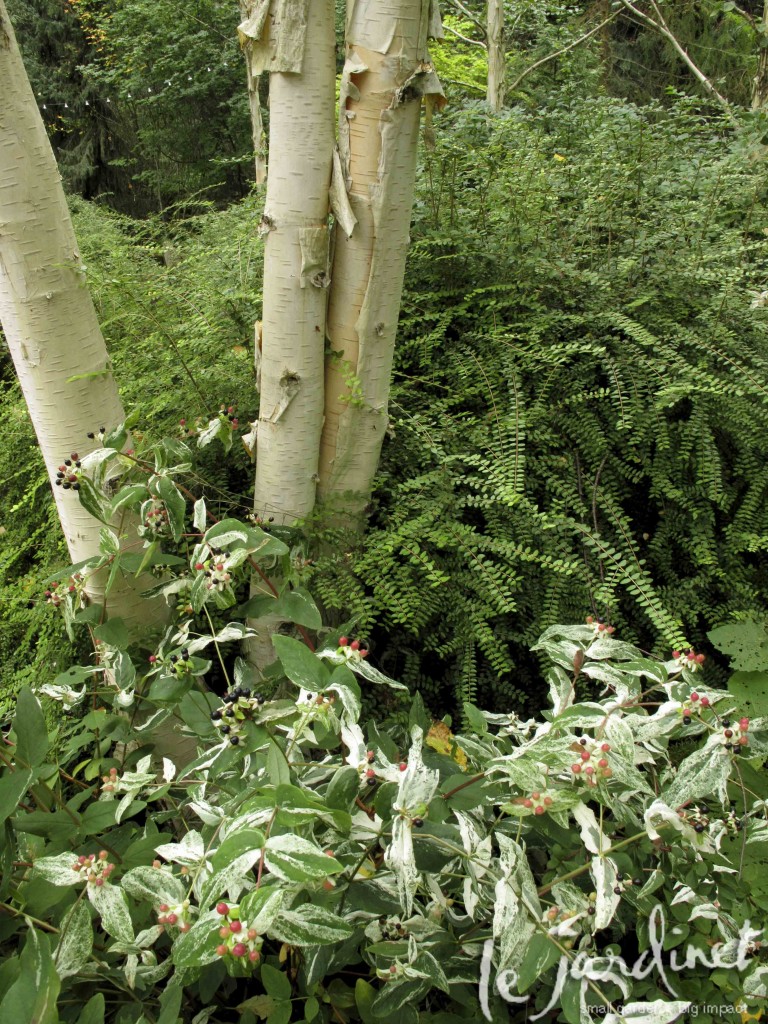
Splashes of white on this St. John's wort (Hypericum a. 'Glacier' ) echo the pristine bark of the Himalayan white birch (Betula u. Jacquemontii)
I remember when we first moved to the United States sixteen years ago and suffering acute culture shock as I walked down the cereal aisle at a local store. I mean really – how many different varieties of frosted flakes do we need?!
A trip to the nursery can leave you feeling equally overwhelmed due to the sheer number of choices, the difference being that of course we do need all those plants don’t we?
With so many plants offered in a rainbow of colors where do you begin? What looks good together? Simply choose one multi-colored plant (the variegation can be in the leaf or flower) and repeat one of those colors in a partner. Mission accomplished. Of course you also need to be sure both plants have similar requirements for sun or shade but you can read that on the tag and most nurseries also stock their plants according to those criteria anyway.
Here are a few easy ideas to get you started, whether you need inspiration for a container design or a garden border.
This humble daylily becomes so much more when paired with 'Grace' smoke bush (Cotinus c. 'Grace') to enhance its rosy tones. The subtle yellow variegation within the flower adds sparkle to what might otherwise be a somber scene.
Sometimes a container design can inspire a whole new planting scheme for the garden. Such was the case when I first saw this cool monochromatic combination by my friend and colleague Christina Salwitz. I LOVE this Euphorbia 'Glacier blue' underplanted with Hebe 'Quicksilver' and have used a mass of both in one of my new borders, anchored by a blue toned weeping spruce. The narrow creamy white margins on the Euphorbia add just enough light to keep this interesting. Who needs flowers?
Just a few years ago the plant snobs would have declared coleus as old fashioned at best and boring at worst. No more! This is the most exciting plant group for summer with every conceivable color combination and pattern. Stripes, spots and splashes jostle with Jackson Pollock flair while many varieties show off a secondary color on the undersides of each leaf. I could write a whole post just on these fashionistas and their design potential but I decided to showcase a super simple combination which would be easy to copy. The coleus on the left has a delicate burgundy stripe, a color which has been repeated in its hearty neighbor to the right. So simple yet so striking.
One of my favorite tall grasses is the variegated maiden grass (Miscanthus sinensis 'Variegatus'). Reaching 4-5' tall, this fresh green and white fountain adds drama to any garden. Planting the white garden phlox 'David' (Phlox paniculata) alongside it added fragrance to the scene as well as a bolder color statement.
Good design doesn't have to be complicated nor necessitate the purchase of ultra expensive specialty plants. Something as ordinary as a variegated grass or daylily can become a star when playing a duet.
For more ideas on designing with variegated plants enjoy this link.
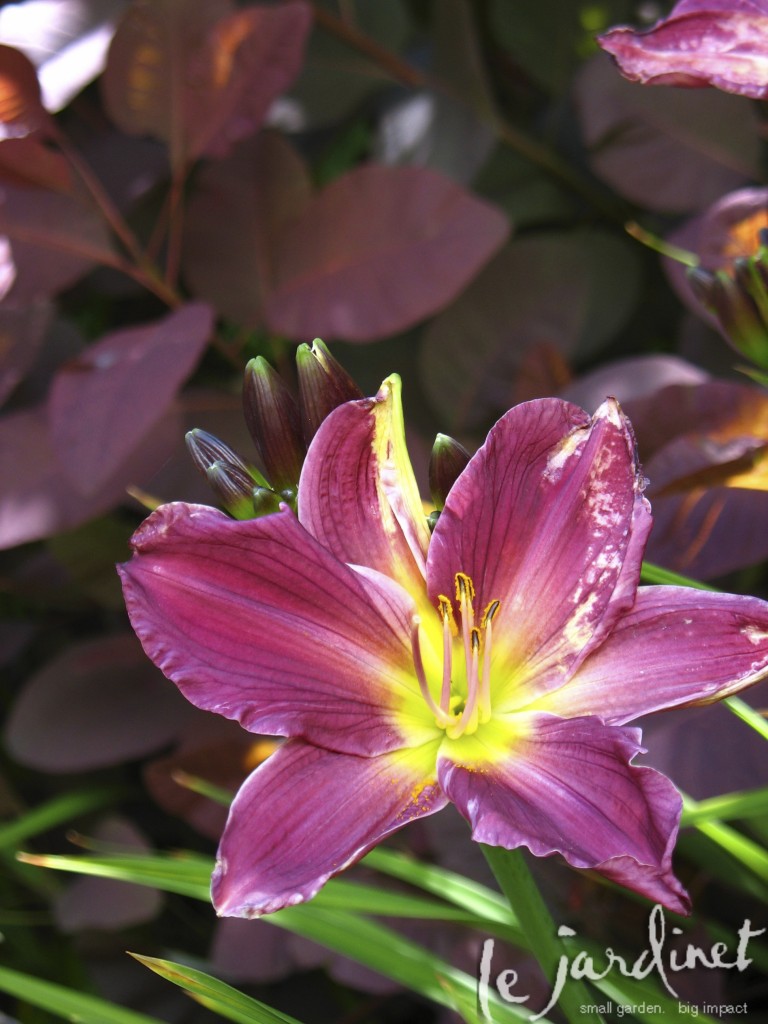
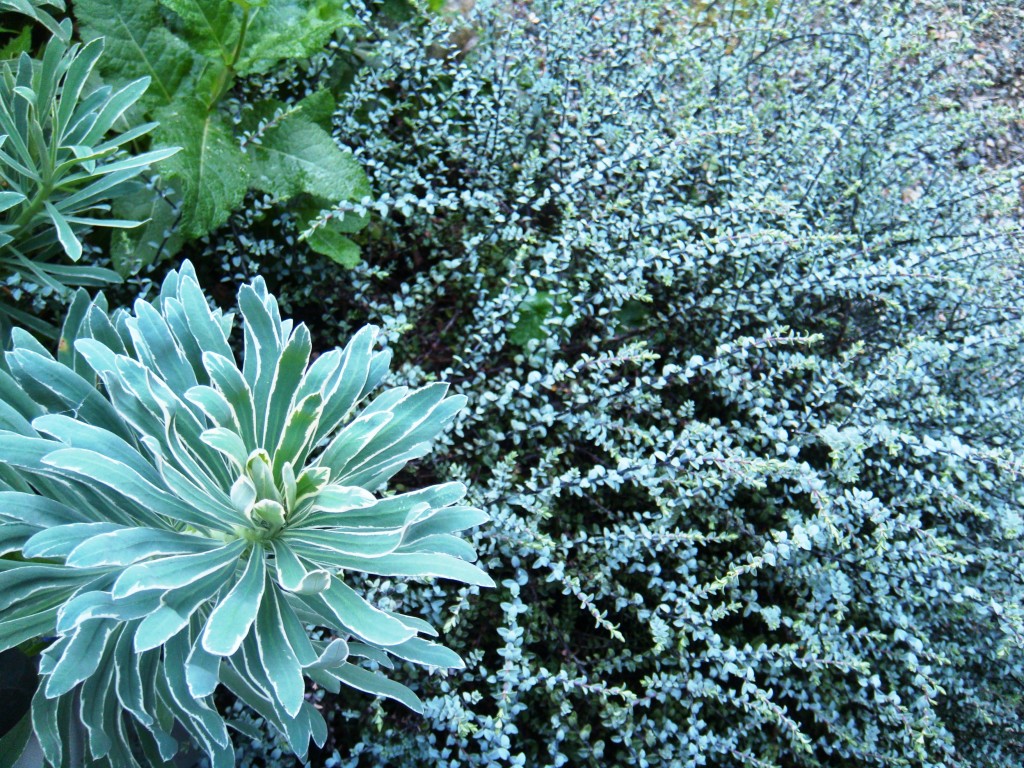
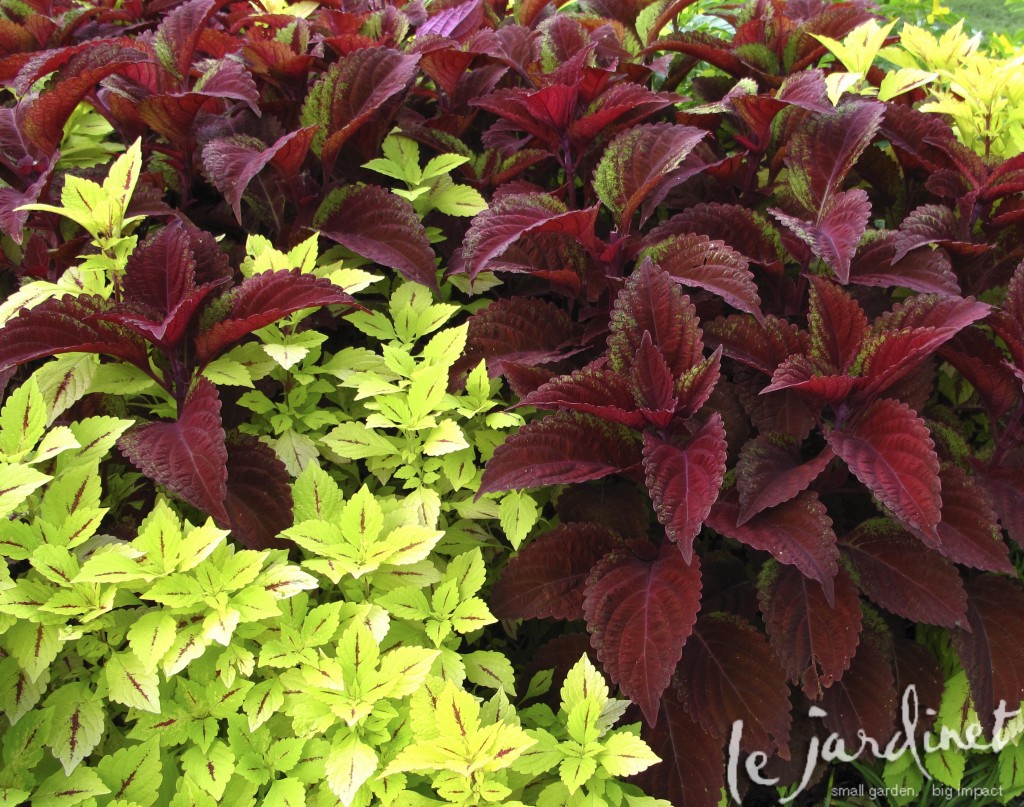
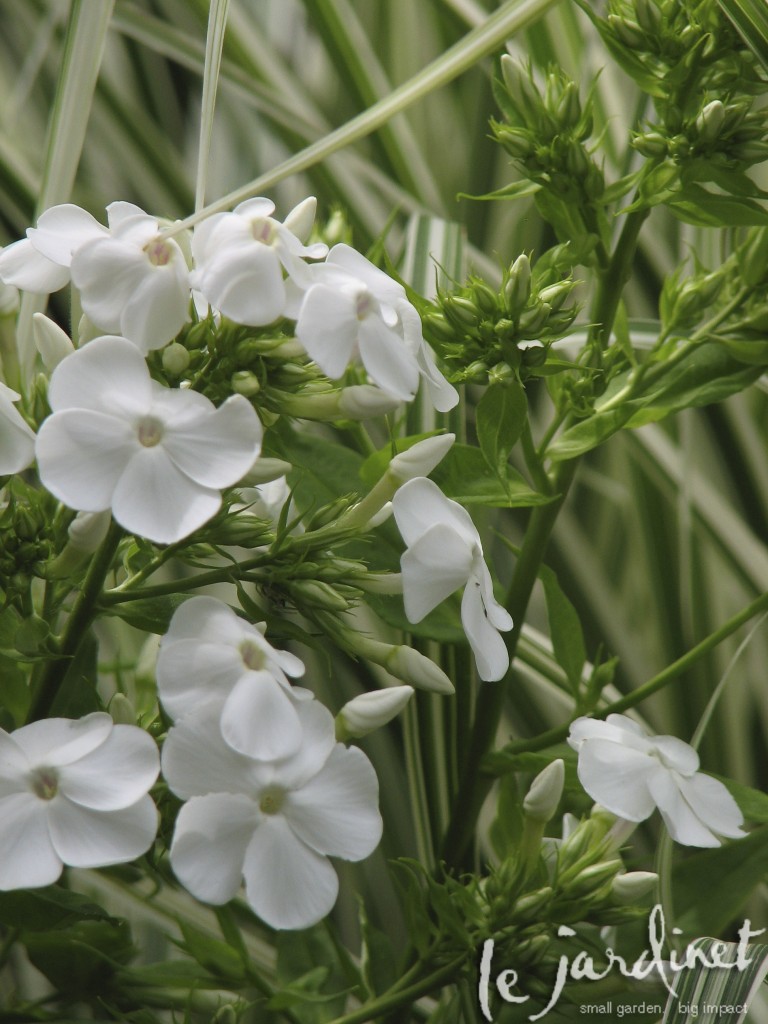
The blue euphorbia combination is stunning! I have never planted euphorbia, but this one is too tempting . Really, all the combinations are great. Also loved your previous post on trees and your comment that a garden needs to be experienced. How true!
Isn't it fabulous Deb? Wish I'd thought of it first!! Planted en masse they make a wonderful feature in my new island border. Since both are deer resistant and drought tolerant they get a five star rating from me.
What a fab spring peek at your thought process in the garden. Seems oddly familiar, but I can't quite place it. Hmmmmm….. Thanks for sharing my combo sweets!
Happy to Christina!
Hi Karen, I like the fresh, new look of your website. Very nicely done! I think plant combinations are one of those aspects of gardening that many of us struggle with. I like your idea of picking repeating a color in a plant partner, especially when it is a secondary flower/leaf color that is repeated. I really like the Euphorbia and Coleus combinations in your post.
Thanks Jennifer – glad you like it! Putting together plant combinations is my favorite part of design but there are certainly occasions when I draw a blank. This is one way I get going again. Once I have two plants then I'm off again and can easily find more companions to blend and highlight.
Karen, all the combinations are really wonderful. What strikes me most is how "finished" they look, too, like having just the right scarf to set off an outfit–that little bit of detail that brings everything together. Thanks for sharing this simple and effective strategy!
You're right Stacy – and that detail can be as simple as the color of a stamen or leaf bud.
Captivating combinations—I can't even say which I liked the best because they are all so good!
Praise indeed from such a great designer Carolyn – thank you! I can only take credit for a few alas.
I am still considering combinations throughout the garden to enhance my original designs. I am more of a gardener than a designer, but I learn more and more each year. These are some great ideas and offer candy for the eyes!
This is the part of garden design I love the best. After sorting out hardscape, focal points and key trees I love to mull over the myriad of possibilities to enhance the overall pictures.